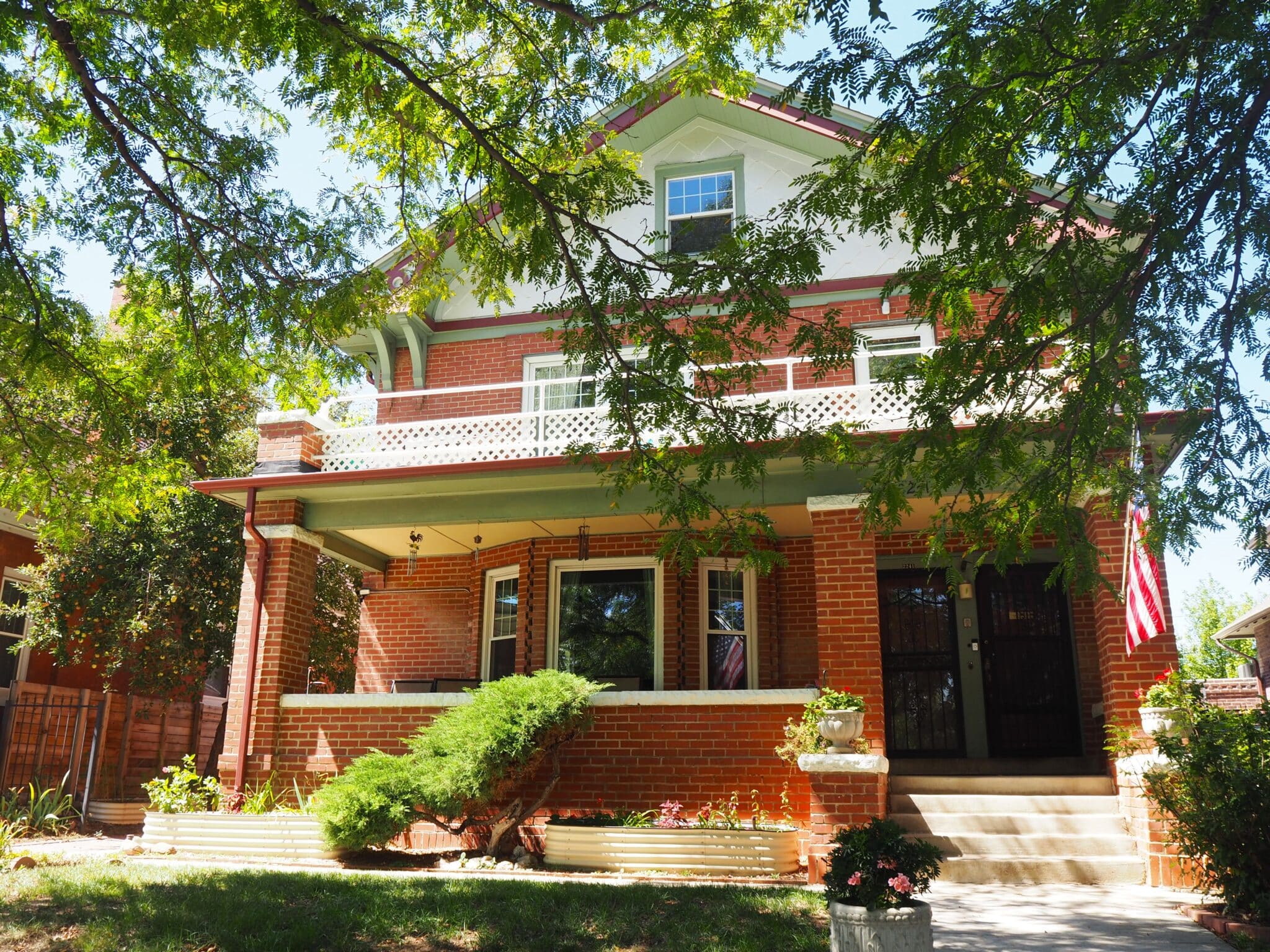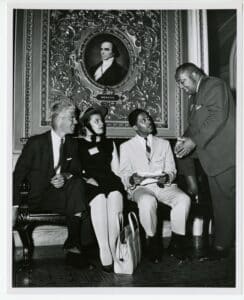
The home at 2241-2243 York St. in Denver is now a city landmark. (Thomas Gounley/BusinessDen)
A home across the street from City Park where a prominent civil rights attorney once lived has been named a Denver landmark.
The Denver City Council voted unanimously on Monday evening to give landmark status to 2241-2243 York St., which Irving P. Andrews owned from the 1970s until his death in 1998. In addition to living there, he also used the home as his law office.

Colorado NAACP leaders meet with Senator Peter H. Dominick (R-Colo) in Washington, D. C. in 1963 to promote support for civil rights legislation. From left to right are Sen. Dominick, Barbara Coopersmith, Irving P. Andrews and Reverend L. Sylvester Odom. (University of Denver Library Special Collections)
Andrews served on the legal team that brought Brown vs. the Board of Education, which outlawed racial segregation in public schools, before the Supreme Court. He also started the first integrated law practice in Colorado, served as president of the NAACP for Colorado and Wyoming, and marched with Martin Luther King Jr., according to the application submitted by the home’s current owners.
Andrews was elected in 1991 to the National Bar Association Hall of Fame.
The York Street duplex was built in 1914 and exemplifies the Vernacular Queen Anne style, according to the application. The home is still in the Andrews family. It is owned by Liz Andrews and Sara Shears, records show.
Myrtle Andrews spoke on behalf of the Andrews family at Monday’s meeting, saying relatives had come from as far as Atlanta, Albuquerque and Los Angeles to watch the vote.
“It represents the history of Denver, a city that you don’t think of like Atlanta, like places in the south, of having segregation,” she said. “However, for the application we found that through the 1970s, it was very difficult for one of the best trial lawyers in the state to get a law office downtown.”
Landmark status effectively prevents demolition of a structure. Owners must get city approval if they wish to make exterior changes to the building. Designation can make it easier to land tax credits or other incentives that can cover the cost of upkeep or renovations.
Landmark applications are occasionally contentious. In April, the council awarded landmark status to another home in the City Park West against the wishes of its owner, a developer hoping to demolish it and build apartments. The developer sued weeks later; the case is ongoing.
Applications supported by the property owner, however — as in the case of the Andrews home — are typically approved without dissent. In May, architect Alan Gass’ home in Belcaro was designated.
This is the 361st home to be named an individual landmark in Denver. The city also has 59 historic districts, which each include numerous structures. In all, about 7,200 of Denver’s 160,000 buildings are protected.
